Pinus clausa (Pinus is an ancient name. Clausa comes from Latin for closed, referring to the uptight cones.)
Pinaceae (Pine Family)
Today’s nod to Sand Pine results from the brain of Sally Brodie. Best suggestion ever, to acknowledge this fetching species! Palm Beach County is home to just two native Pines: Slash Pine (Pinus elliottii) of pine flatwoods and of turpentine, and Sand Pine of sand. Sand Pines are strictly scrub species, on sterile thirsty white scrub sand. The tree is mostly a Florida species, trespassing over the state line to the northwest. There are two separate scarcely different populations, one on the Florida peninsula, the other in the Panhandle plus.
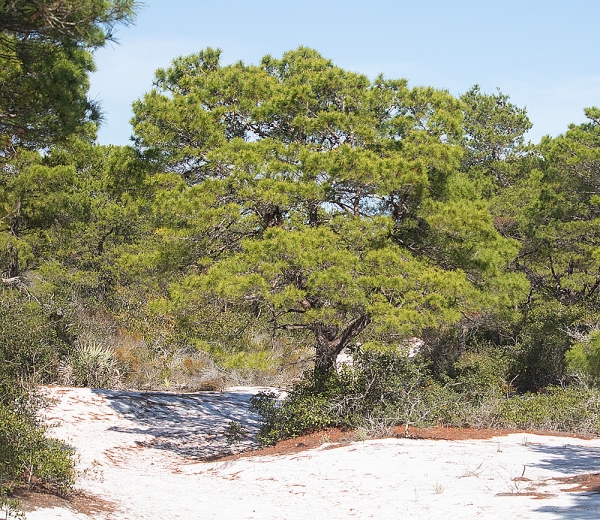
Sand Pines differ from Slash Pines by having on average smaller statures (to about 60’ tall and 60 years old), smaller needles, and smaller cones. They grow in every shape and mis-shape possible, from tall and thin to short and clumpy, gnarly, twisty, wind-sculpted, and contorted. An artist’s dream. They are not as determined as Slash Pines to shed their lower branches.
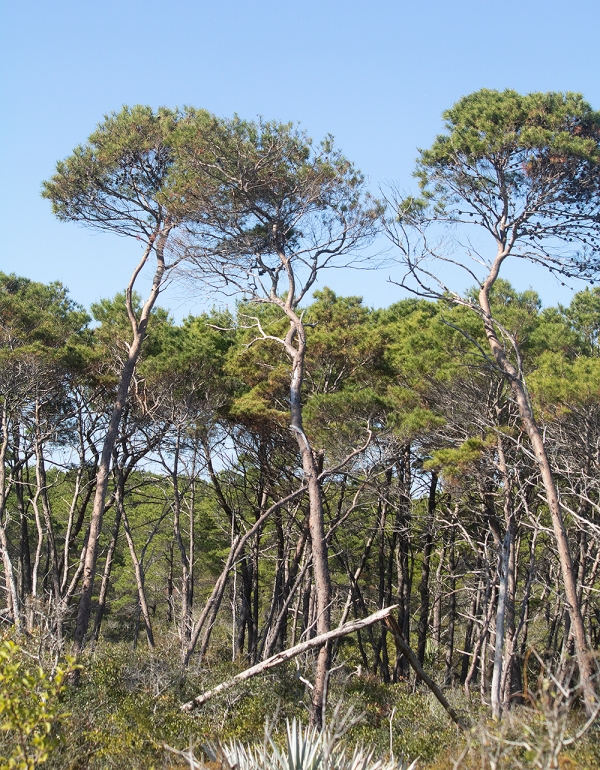
Sand Pines have witch’s brooms. Witch’s brooms are regions of abnormal congested branching occurring in many plant species. They can result from pathogens, buggy infestation, extreme weather, air pollution, and mutations. The last-mentioned, being built into the DNA, can be useful. Those in Sand Pine are probably mutational Brooms caused by weather or pathology would probably be clustered, whereas in Sand Pine they are unusual and widely separated. The tight compact growth of a WB looks almost “normal” if you ignore the rest of the tree. Perhaps it is an ancestral condition, you know, like humans born with tails. WB mutations may result from UV exposure, like skin cancer. Those in conifers are abundant in high UV environments, such as mountain, and sun-baked Florida white sand dunes. Different mutations sometimes appear at the tops of Sand Pines, in particular, yellow needles.

Horticulturists harvest witch’s brooms to generate small bushy versions of wild species. Some enthusiasts comb the countryside seeking them out. To be honest, I wish they would find a new hobby, because the growths are intriguing, pretty, part of nature, slow-growing, on property collectors do not own, and limited in numbers. (No harm IMHO in removing with permission small snippets for grafting, tissue culture, or research.) Beyond ornamentality, witch’s brooms in lumber species are potential gene sources for tree crop improvement. Sand Pine has minor commercial significance for pulpwood.
They are in their mating frenzy right now. The trees are covered with thousands of pollen-making “male”” cones fertilizing a grand total of, say, a half-dozen pollen-receptive “female” cones on an entire tree. The male/female ratio is my guesstimate 10,000/1. Perhaps environmental circumstances can influence that balance.
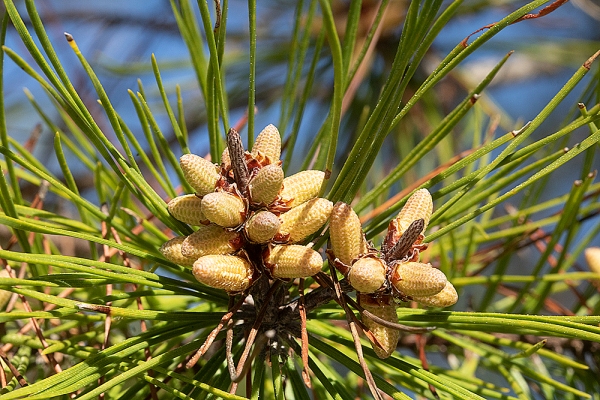
The pollination-ready female cones are about the size of a bumpy yellow pea. The tree holds them aloft like cell phones at an Elton John concert, situated to snag pollen from the wind. Often they are paired. After fertilization the female cones close up and grow up. I don’t know how long they take to reach full size, but a guess, two years. The closed cones persist on the tree for years until eventually opening to free their seeds. The Sand Pines on the Florida Peninsula keep the cones hermetically sealed (they are called “serotinous” ser-OT-ah-nus cones) until release by time, hot weather, or most notably trial by fire. Fire whacks the competition and apparently sometimes causes enough of a seed release (and seed stimulation? and setback to the parent generation?) to start a new wave of even-aged Sand Pines. The separate population in the Panhandle does not keep its cones sealed.
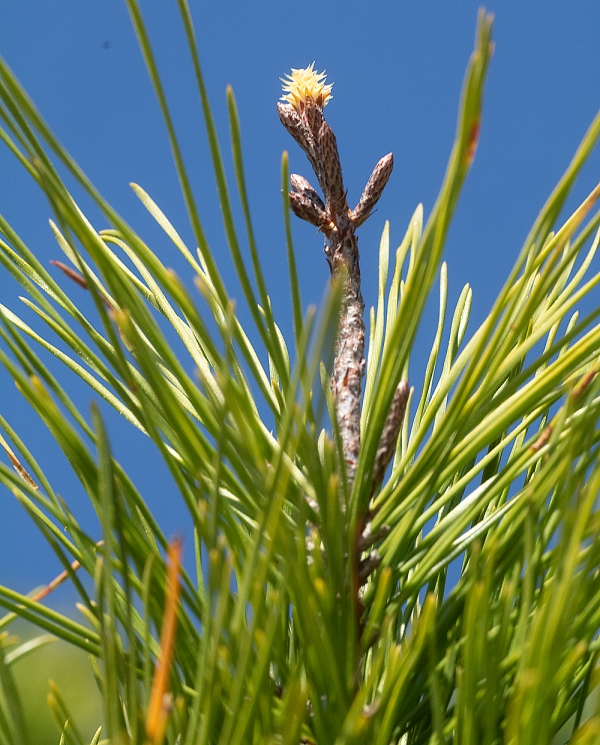
A reasonable question about any Florida scrub species perched on a mound of sugar sand is, “where are the roots”? Some dune dwellers spread shallow roots far and wide to catch every raindrop. Others drive roots down deep, even below the white sand. A glimpse of SP roots appears at sites where the trees are on elevated dunes. Due to erosion and human activity, roads through scrub dunes can be sunken several feet alongside the bases of adjacent trees, exposing to view their massive roots headed for China. Despite being hurricane targets, you seldom see the remains of an uprooted Sand Pine, the roots being apparently too “rooted” to be dislodged. Instead, hurricane victims are fractured above-ground, or sometimes bent.
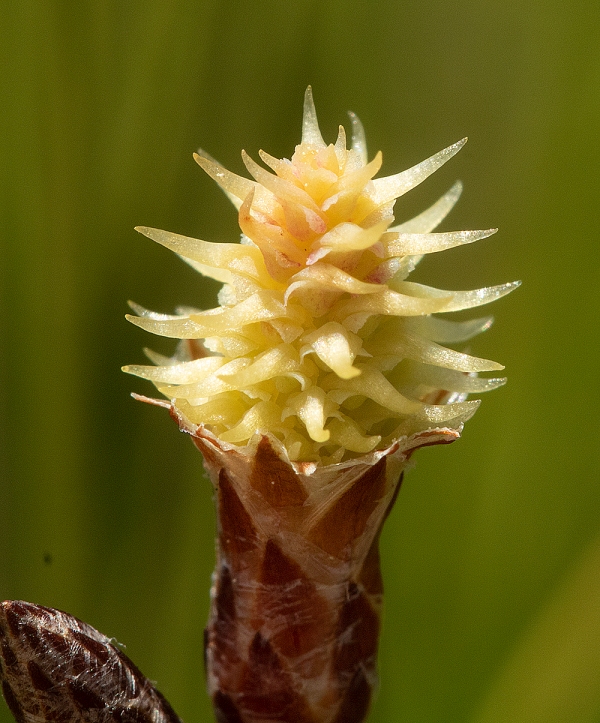
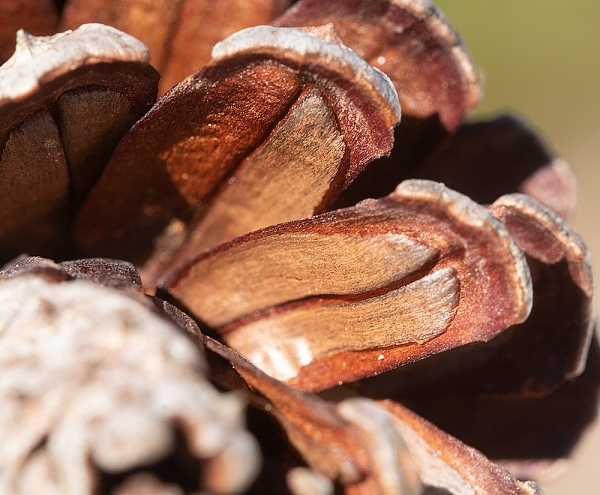
You usually don’t see many epiphytes except maybe Spanish-Moss on pines, at least not on Slash Pines, but Sand Pines often host Tillandsia (Bromeliad) species, including one you do not encounter often in other habitats around Palm Beach County, the Banded Airplant (Tillandsia flexuosa). Kinda suspect the abundance of this species may have been diminished by collectors.
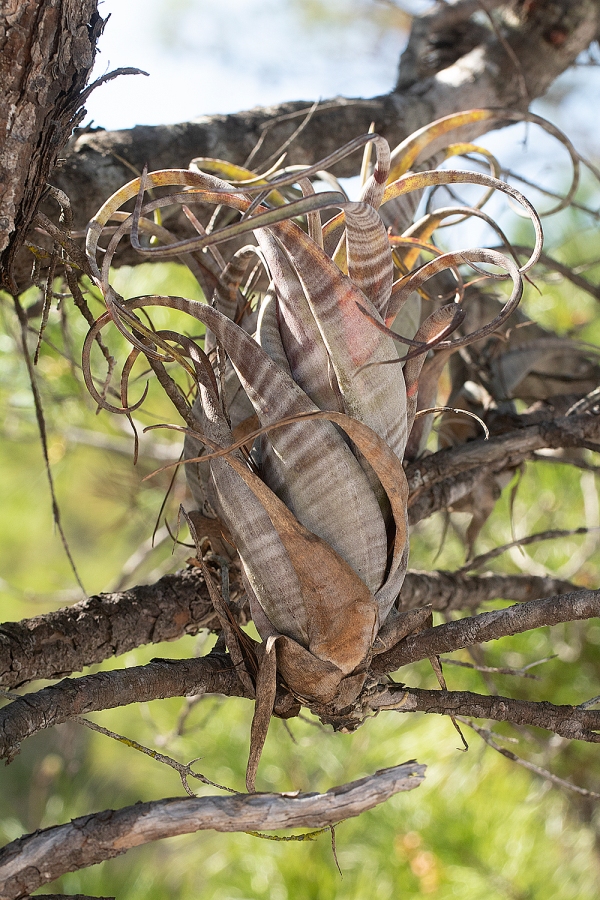
Sand Pines are not only friends of the epiphytes…they can be nurse trees too. Go to any desert and look under the trees. There you find smaller species huddled in the relatively shadier moister wind-protected microhabitat. A trip to a Sand Pine stand looks like Arizona, and same thing: Happy campers under the pine boughs. For instance, Florida-Rosemary seems to like it there.
Linda Grashoff
January 15, 2021 at 2:29 pm
Lots of chuckles in this informative post, George! Thanks.
George Rogers
January 15, 2021 at 3:29 pm
Hi Linda…thanks!
Harvey Bernstein
January 20, 2021 at 8:53 am
I love Sand Pines and their associated community. Florida scrubs are magical places.
Have you done a piece on scrub oaks?
Thanks for this post.